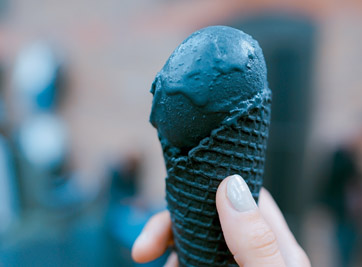
Identifiers
INS No. 153
Vegetable Black
E 153
Physical Description
Vegetable carbon is produced by the carbonization of vegetable materials such as wood, cellulose residues, peat and coconut and other shells. The raw material is carbonized at high temperatures and consists essentially of finely divided carbon.
Common Uses
Typical applications include confectionery, bakery products, decorations, cheese coating, black caviar substitute, cosmetics, and pharmaceuticals.
Specifications
Regulatory Approvals
JECFA: No ADI allocated (31st Meeting, 1987)
USA: Vegetable carbon has never been authorized for use in food, drugs or cosmetics. Carbon black (channel or impingement) was provisionally listed as an exempt for certification in food, drugs and cosmetics prior to its delisting in 1976.
EU: No ADI allocated (EFSA, 2012). Specific food categories where vegetable carbon is authorized for use at quantum satis have been defined in Regulation (EC) No 1333/2008 of the European Parliament and of the Council of 16 December 2008 on food additives.
Safety Reviews
EFSA Panel on Food Additives and Nutrient Sources added to Food (ANS); Scientific Opinion on the re-evaluation of vegetable carbon (E 153) as a food additive. EFSA Journal 2012;10(4):2592. [34 pp.] Available online